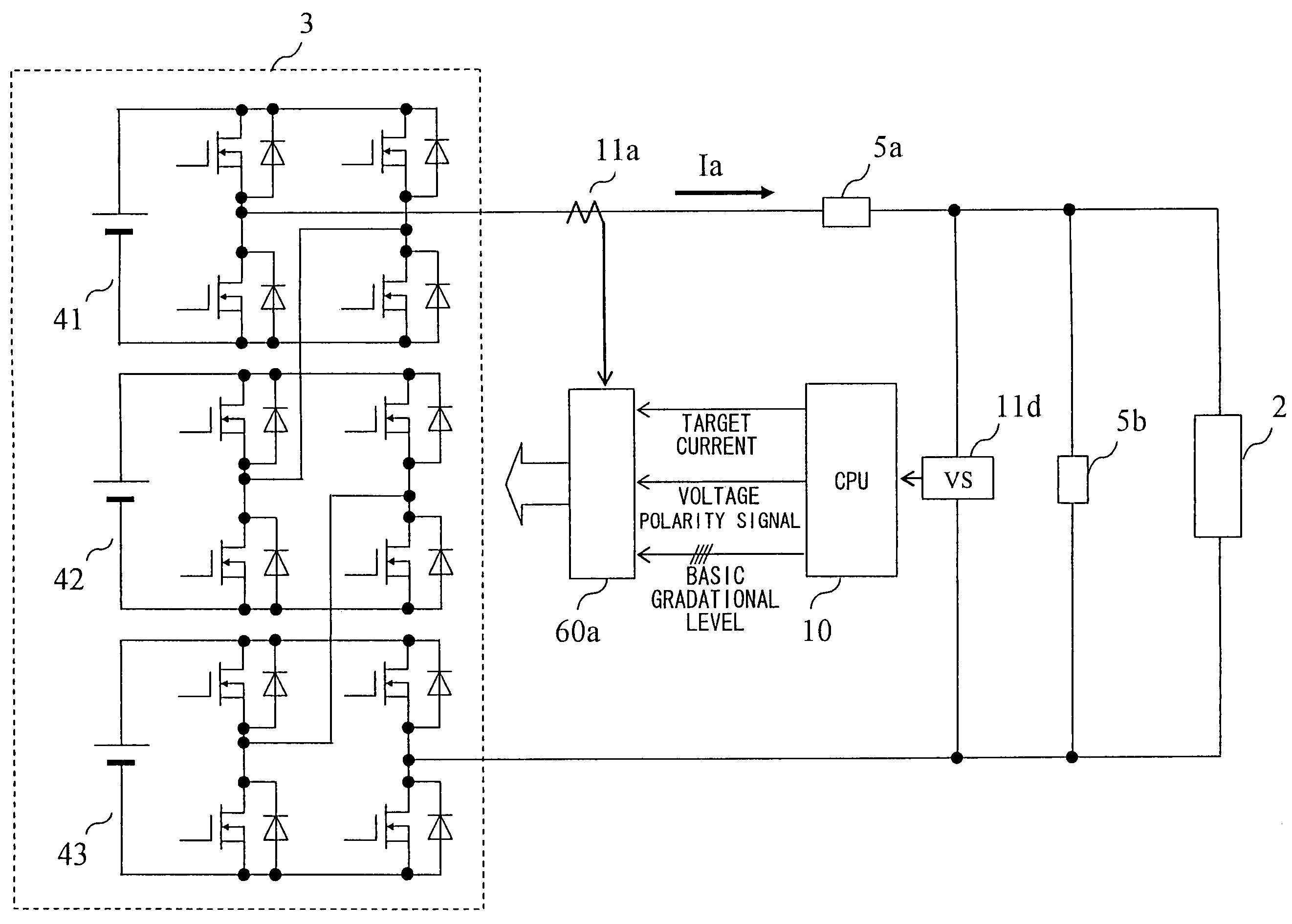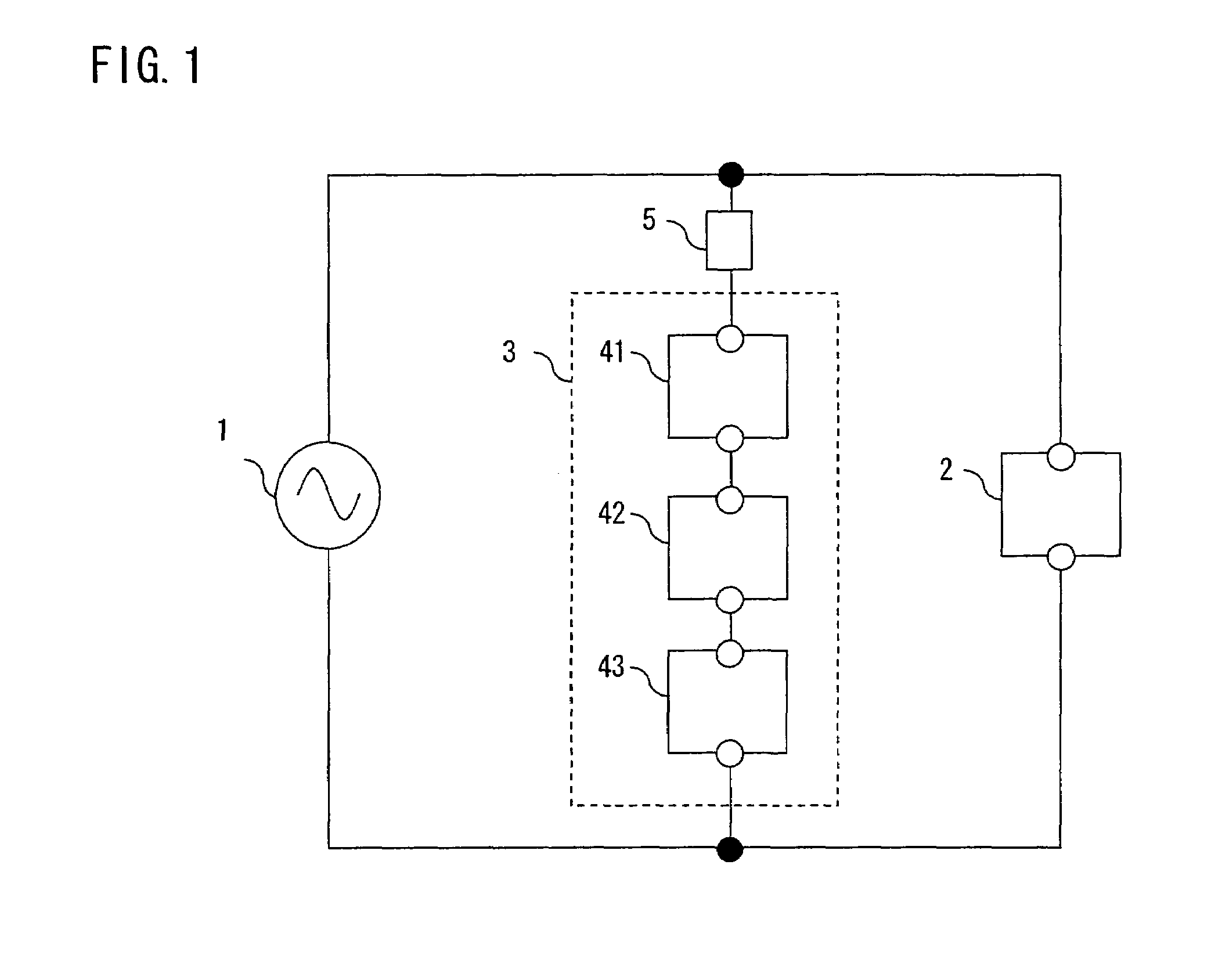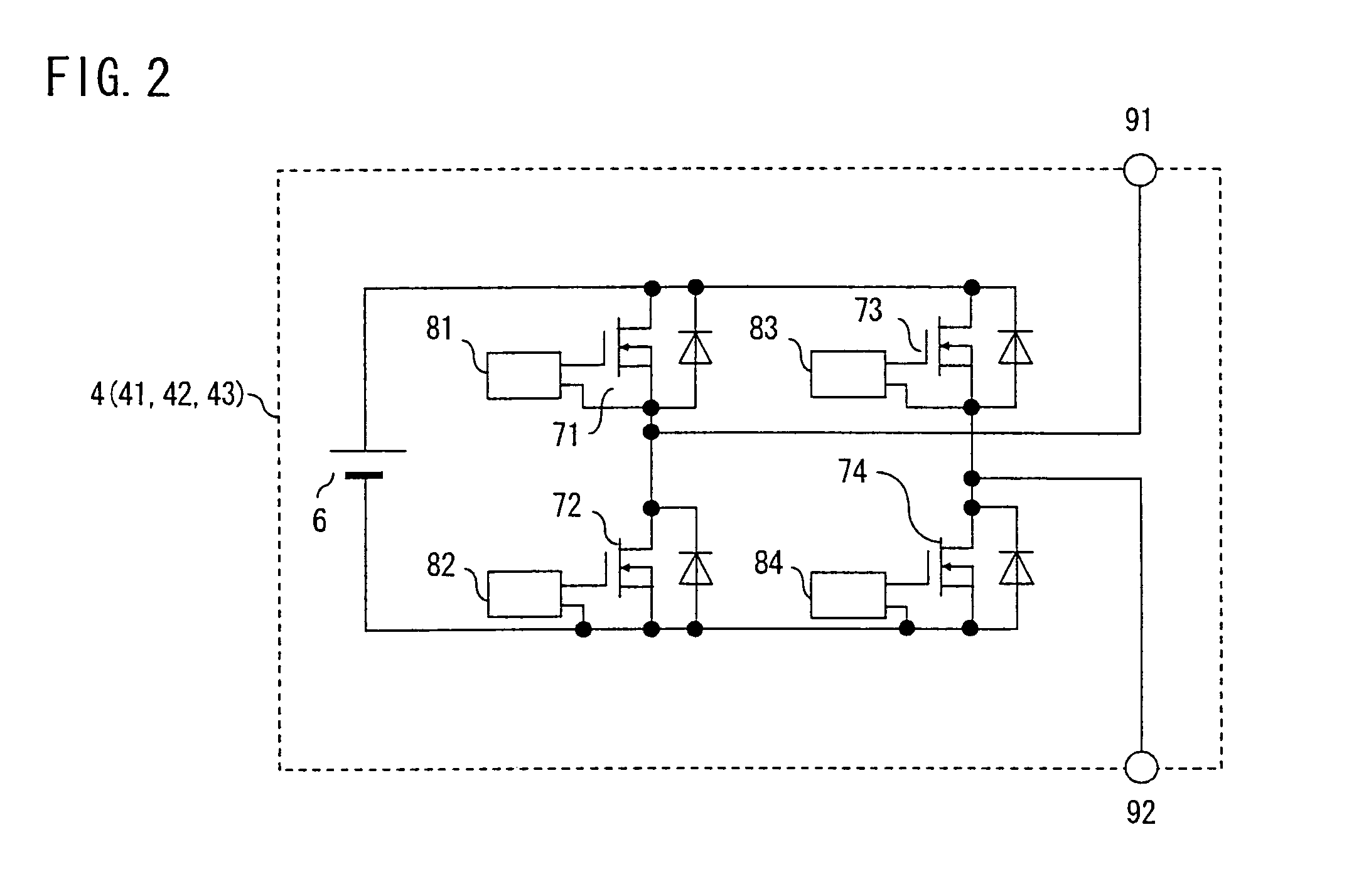Power converting device
a power conversion and power technology, applied in the direction of dc-ac conversion without reversal, dc-ac circuit to reduce harmonics/ripples, transportation and packaging, etc., can solve the problem of difficult manufacturing of an active filter system in a compact structure, and achieve the effect of small size and high precision
- Summary
- Abstract
- Description
- Claims
- Application Information
AI Technical Summary
Benefits of technology
Problems solved by technology
Method used
Image
Examples
first embodiment
[0026]FIG. 1 is a block diagram showing the configuration of a main part of a power converting device according to a first embodiment of the invention connected between a single-phase power supply 1 and a single-phase load 2 in parallel therewith, the power converting device being used as an active filter.
[0027]As shown in FIG. 1, the power converting device of the embodiment includes a single-phase multiplex converter, or a single-phase multiplex inverter 3, in which a plurality of (three in this embodiment) single-phase inverters 41-43 are connected in series. The single-phase multiplex inverter 3 is series-connected to a filter circuit 5 made up of a line reactor, and the single-phase multiplex inverter 3 and the line reactor are together connected to the single-phase power supply 1 in parallel therewith.
[0028]FIG. 2 is a circuit diagram showing the configuration of each of the single-phase inverters 41-43 (hereinafter referred to collectively as the single-phase inverters 4) con...
second embodiment
[0065]While the single-phase multiplex inverter 3 is controlled in such a manner that the inverter current Ia follows the harmonic compensation reference current 24a in the foregoing first embodiment, the embodiment may be so modified as to control the single-phase multiplex inverter 3 such that the line current Is follows a reference current (load current fundamental component value) obtained by smoothing the discrete load current fundamental component value output from-the CPU 10 by the filter 23 as shown in FIG. 12.
[0066]Also, while the load current IL is passed through the bandpass filter 13 to remove the harmonic components contained therein and extract the fundamental component which is input into the CPU 10 in the first embodiment, the fundamental component of the load current IL is extracted by the CPU 10 in this modified form of the first embodiment, or a second embodiment of the invention.
[0067]The line current Is is controlled by varying the inverter current Ia by perform...
third embodiment
[0068]While the foregoing embodiments are concerned with the power converting devices used as the active filters, a power converting device of a third embodiment described below is used as a system interconnection inverter for converting DC power fed from a DC power source into AC power and thereby connecting the DC power source to a power system. FIG. 13 is a circuit diagram showing the configuration of the power converting device according to the third embodiment of the invention.
[0069]Like the power converting device of the first embodiment, the power converting device of the third embodiment is a single-phase multiplex converter, or a single-phase multiplex inverter 3, in which a plurality of (three in this embodiment) single-phase inverters 41-43 are connected in series. The single-phase multiplex inverter 3 is connected to a load 2 (which is a power system in this embodiment) via a reactor 5a. A capacitor 5b parallel-connected to the load 2 serves as a filter for removing harm...
PUM
 Login to View More
Login to View More Abstract
Description
Claims
Application Information
 Login to View More
Login to View More - R&D
- Intellectual Property
- Life Sciences
- Materials
- Tech Scout
- Unparalleled Data Quality
- Higher Quality Content
- 60% Fewer Hallucinations
Browse by: Latest US Patents, China's latest patents, Technical Efficacy Thesaurus, Application Domain, Technology Topic, Popular Technical Reports.
© 2025 PatSnap. All rights reserved.Legal|Privacy policy|Modern Slavery Act Transparency Statement|Sitemap|About US| Contact US: help@patsnap.com



